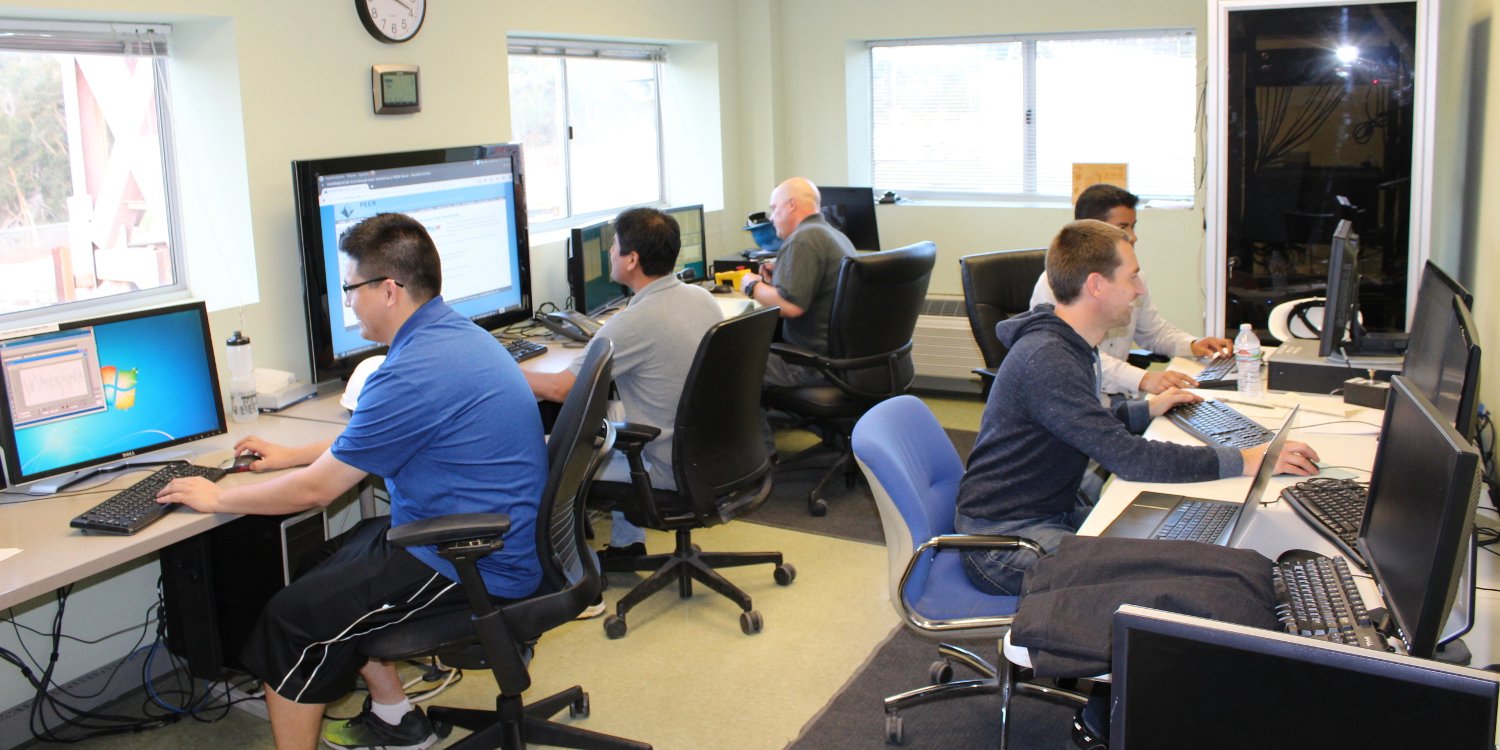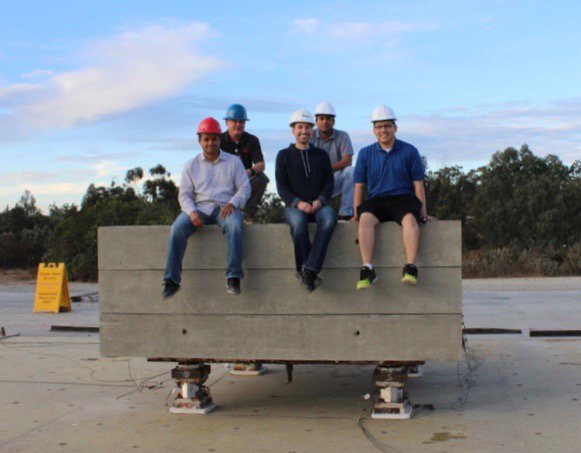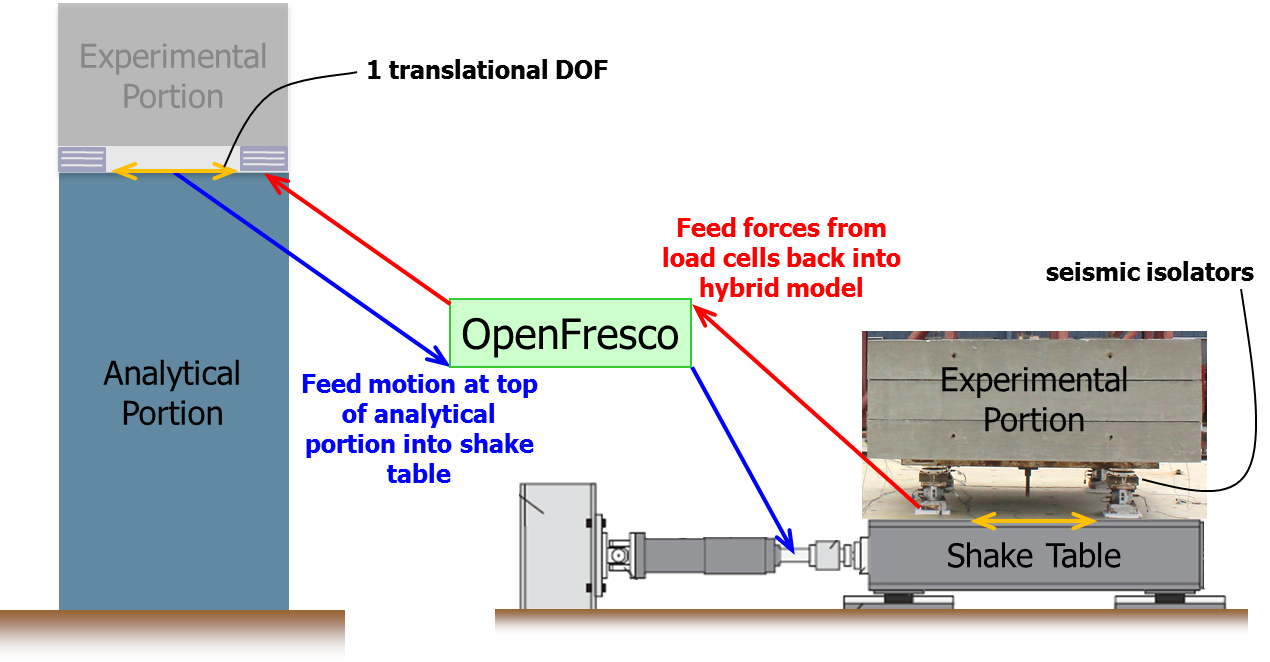Collaboration Between NHERI Facilities:
SimCenter and UC San Diego Implement Hybrid Shake Table Tests
Published on February 5, 2018

Shake table control room. Development team (L to R, clockwise): Manuel Vega, Humberto Caudana, Darren McKay, and Gilberto Mosqueda from NHERI UC San Diego EF, and Andreas Schellenberg from NHERI SimCenter
Hybrid simulations involving experimental substructures on the largest shake table in the U.S. were successfully completed through the collaborative effort of hybrid simulation experts from the NHERI SimCenter and UC San Diego Experimental Facility. These tests were executed during the commissioning of hybrid simulation capabilities at the NHERI EF.
The real-time hybrid shake table testing involved the numerical simulation of multi-story shear buildings subjected to earthquake loading with the upper story of the hybrid model being tested experimentally and excited by the Large High Performance Outdoor Shake Table (LHPOST) at UC San Diego. Hybrid shake table testing provides an efficient approach for performing parameter studies, by changing the properties and the behavior of the numerical portion of the hybrid model from test to test. The data produced in these experiments is being curated on the NHERI DesignSafe Data Depot.
As part of this development and commissioning effort, computational expertise and software components from the SimCenter were implemented to extend the capabilities of the UC San Diego EF to enable real-time hybrid shake table testing.

Seismically isolated experimental specimen on shake table. Development team (L to R): Gilberto Mosqueda and Darren McKay (NHERI UC San Diego EF), Andreas Schellenberg (NHERI SimCenter), Humberto Caudana and Manuel Vega (NHERI UC San Diego EF).
The hybrid models consisted of buildings where the upper story (or tuned-mass-damper) was experimentally tested on the shake table and the lower stories were modeled numerically in Simulink or OpenSees. The experimental setup consisted of a rigid mass supported on four triple pendulum bearings. Two and six degree-of-freedom building structures were examined to verify the stability of the system in the presence of higher frequency modes. The experimentally tested portion of the hybrid model can represent the upper stories of a building isolated by a mid-level isolation system or a tuned mass damper on top of a building. The demonstrated testing capabilities will now enable researchers to investigate different hybrid simulation configurations that take advantage of the large capacity of the shake table and the available soil boxes to include geotechnical elements.
The development team included research engineer Andreas Schellenberg from the NHERI SimCenter; and professor Gilberto Mosqueda, postdoctoral researcher Humberto Caudana, graduate student Manuel Vega and Darren McKay, site operations manager from UC San Diego.
Andreas Schellenberg noted, We were pleased to bring our expertise and experience to expand the shake table capabilities to include hybrid testing. The collaboration with UC San Diego was very fruitful and mutually beneficial, as demonstrated by the successful implementation and verification of two approaches for performing hybrid shake table tests. Were excited to see what NHERI researchers accomplish with this new capability.
"Through the collaboration with the SimCenter, we were able to implement new hybrid testing capabilities including advanced computational modeling that will allow for the integration of more complex numerical models. We look forward to working with researchers seeking to implement hybrid testing on the LHPOST," said Gilberto Mosqueda of the UC San Diego EF.






